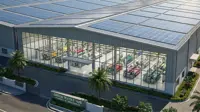Cloud computing: Instant miracles unlikely, says Gartner
02 Feb 2009
The cloud computing market is in a period of excitement, growth and high potential, but will still require several years and many changes in the market before cloud computing - or service-enabled application platforms (SEAPs) - becomes a mainstream IT effort, according to Gartner, Inc.
The Connecticut-based IT research and advisory giant said that technologically aggressive application development organisations should look to cloud computing for tactical projects through 2011, during which time the market will begin to mature and be dominated by a select group of vendors.
Following this period, Gartner predicts that the market will see a surge of new vendors and subsequent consolidation as cloud computing becomes appealing to more mainstream application development organisations. By 2015, cloud computing will have been commoditised and will be the preferred solution for many application development projects.
"SEAPs are the foundation on which software-as-a-service solutions are built," said Mark Driver, research vice president at Gartner. "As SEAP technologies mature during the next several years, Gartner foresees three distinct, but slightly overlapping, phases of evolution. The first phase, through 2011, will be that of the pioneers and trailblazers; the second, running from 2010 through 2013, will be all about market consolidation; while the third phase, from 2012 through 2015, will see mainstream critical mass and commoditization."
Phase 1: Pioneers and trailblazers
This will largely be a market development phase. Through 2011, given the natural immaturity of SEAP solutions, compounded by their proprietary nature, Gartner advises SEAP adopters to focus on opportunistic solutions - quick-hit, tactical opportunities where time to market and developer productivity outweigh long-term technical viability. Although some rare exceptions will exist, mainstream IT developers should focus primarily on SEAP investments where return on investment can be acquired within 18 to 24 months.
Technology providers who focus on technical merit over investment protection will gain the most success among early adopters. Building on this trend, many early SEAP vendors will focus on rapid-application-development-oriented tools and deployment features, making their solutions particularly attractive among computer end-users and social-computing projects.
Phase 2: Market consolidation
Gartner predicts that by 2012, the SEAP market will become overcrowded with a broad range of solutions from large and small vendors, and competitive pressure will drive many weaker players from the market, resulting in acquisition activity. During this consolidation phase, SEAP infrastructure will become increasingly attractive to a broader range of potential adopters, resulting in a more mainstream and conservative user base.
Consequently, the "ability to execute" will become as important as technical innovation and market vision among most mainstream adopters. Return-on-investment time frames will be extended from tactical short-term opportunities to longer, strategic time frames of three to five years.
By 2013, Gartner expects SEAP technology to be the preferred, but not the exclusive, choice for the majority of opportunistic and architecturally simple application development efforts among Global 2000 enterprises. As a result, some will seek to expand their reliance on SEAP platforms to include longer-term strategic (systematic) investments.
Phase 3: Mainstream Critical Mass and Commoditization
In 2013, a small number of large SEAP providers will dominate the market, setting the standards. These vendors will primarily leverage proprietary technologies developed during the previous five years, but they will also widely support intracloud application programming interfaces to establish a SEAP technology "fabric," linking cloud-based solutions across vendor platforms.
Market expansion into increasingly conservative user bases will further shift market emphasis from innovation to stability, cost and investment protection. Competition between proprietary lock-in and open-SEAP technologies will increase and, by 2014, concern over lock-in will lead to critical-mass support for one or more open-source SEAP software stacks. These open-SEAP stacks will begin to compete with proprietary solutions and slowly growing portions of the SEAP market beyond the 2015 time frame.






















